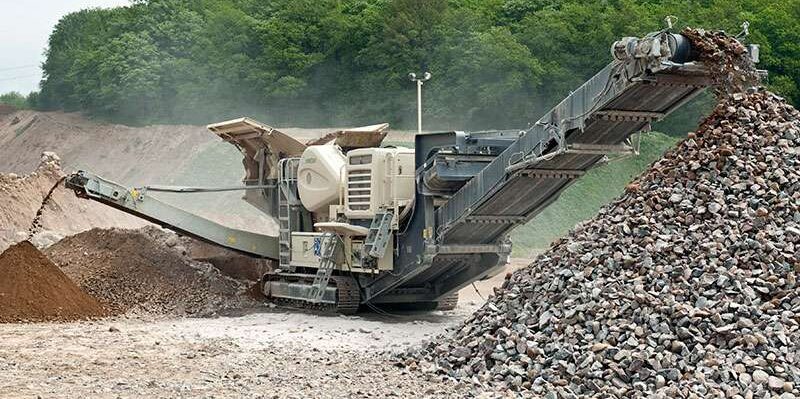Mining uptick sees larger Metso crushers enter South Africa
Crushing equipment specialist Pilot Crushtec is seeing growing demand from the mining sector as rising commodity prices breathe new life into this industry.
This contrasts with the construction sector, which remains challenged, according to Francois Marais, director sales and marketing at Pilot Crushtec. Sluggish demand for construction materials has meant that capital expenditure for aggregate crushers remains under pressure.
“The upturn in mining is spurring local demand for our mobile crushing equipment as contractors – who are our traditional market – move onto mining sites to conduct crushing contracts,” says Marais. This shift from quarry-based or on-site crushing to the mainstream mining sector is demanding crushing equipment from the larger end of the product range.
“We’ve seen a move towards much bigger equipment than what our customers in aggregates would typically use,” he says. “Whereas we might in the past have been supplying operations producing 250 to 350 tonnes per hour, we are now working with customers who work in the region of 500 to 600 tonnes per hour and upwards.”
This is well within the capacity of the Metso crusher range – represented regionally by Pilot Crushtec – which includes mobile units with throughput capacity of up to 1000 tonnes per hour. Recent orders include the supply of a mobile crushing train to an iron ore operation in the Northern Cape, where it is successfully processing up to 550 tonnes per hour.
“We welcome these new opportunities, as we have the quality of product and depth of expertise to ensure the material volumes and operational uptime that mines require,” he says. “We know what this environment demands and can confidently support our customers and equipment at this scale.”
This is opening the door to an exciting era of expansion for Pilot Crushtec, where the company is introducing new models and configurations. At one of the iron ore projects in the Northern Cape supplied by the company, for instance, a global ‘first’ is on the cards for Metso.
“We are changing the feed arrangement on a mobile cone crusher to include a vibrating grizzly screen feeder configuration – upgrading from the traditional apron feeder,” says Marais. “This means that the upgrade kit is being installed in a completely novel manner at this mine.”
In another pioneering project, the company will, for the first time, be bringing in two Metso large-format, triple-deck ST4.10 mobile screens. While it is not a new product, this installation will be the model’s debut into the South African market. The first unit will arrive in September and the second in October.
“We have high ambitions for these robust units, and expect them to be leading performers in their segment,” he says. “The iron ore application – with its high densities and abrasiveness – is among the most demanding, and these Metso products are well suited to it.”

In neighbouring countries, the aggregate market is holding up better than in South Africa, he notes. The Democratic Republic of Congo has been an active market for Pilot Crushtec, with a 250 tonne per hour aggregate plant recently installed and a mobile jaw crusher delivered. Another mobile jaw crusher was also recently supplied to an aggregate producer in Zambia.
When South Africa’s aggregate industry recovers, Pilot Crushtec is looking forward to the contribution that will be made by its recently launched mid-market Nordtrack range of mobile crushers and screens.
“Having launched this range locally just before the Covid-19 lockdowns began, it has not yet had much opportunity to prove itself,” he says. “However, sales of these units have been strong internationally, signalling that our product quality and pricing has met expectations.”
Metso Outotec recently renewed its distributorship agreement with Pilot Crushtec for another five years, after a very successful first five-year period in a formalised relationship.
Pilot Crushtec also continues to locally manufacture its own range of crushing equipment, managing the various logistical challenges posed by the pandemic’s impact on global freight movement.
![]()





